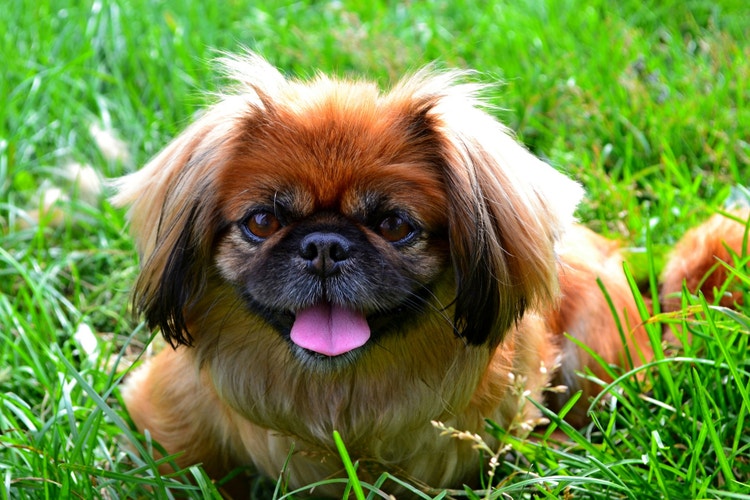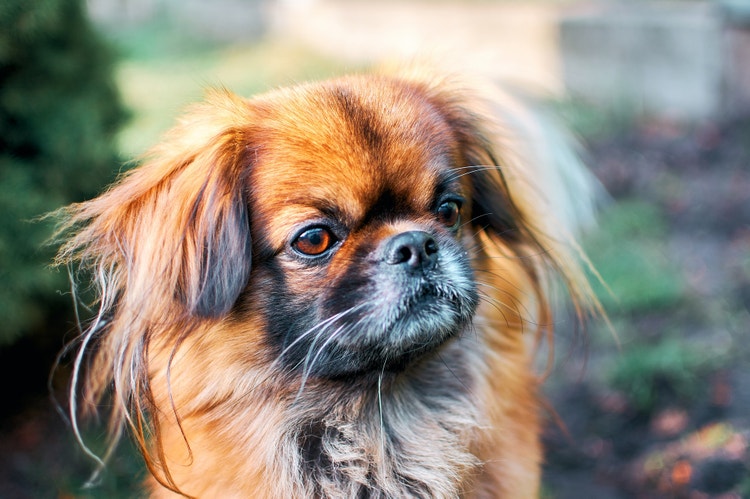
Pekingese


Where Are Pekingese Dogs From?
The Pekingese has been traced to the Tang Dynasty of the 8th century. The breed was created to be a companion dog exclusively for Chinese nobility. They were held so sacred in China in ancient times that their likeness was used for intricately carved Foo Dog idols made of ivory, bronze, and jeweled wood. In the first century AD, emperor Ming Ti even made the Pekingese one of the protectors of the Buddhist faith. By the beginning of the 19th century, they were the toast of the imperial court and reaching the prime of their popularity.
During the invasion of the Imperial Palace in 1860, the British found five Pekingese in the home of the Emperor’s aunt and brought them back to England. Queen Victoria was presented with one in 1893, which was the first time the breed was shown in Europe. The Pekingese arrived Stateside in 1906 and were promptly admitted into the American Kennel Club.
The breed went through many modifications during the 20th century. Up until that point, the Pekingese had shorter ears and longer legs than today’s breed standard, and they currently resemble a dwarfed version of the Tibetan Spaniel. Since being brought down from their pedestals in China, the breed has maintained its personality as a dignified, calm, and charming family pet. They are fearless, yet never aggressive, and give love and loyalty to their owners.
Caring for a Pekingese
Are Pekingese Muscular Dogs?
Are Pekingese Muscular Dogs?
Pekingese are meant to be stocky, muscular dogs with little body fat. They are prone to becoming overweight, so watch those treats!
Do Pekingese Need Grooming?
Do Pekingese Need Grooming?
The Pekingese needs daily combing and brushing to prevent matting. To avoid facial skin fold infections, clean the face and eyes regularly.
Are Pekingese Healthy Dogs?
Are Pekingese Healthy Dogs?
Pekingese have a general lifespan of 13 – 15 years. They are a brachycephalic breed, which makes them prone to heat intolerance, respiratory distress, and gastroesophageal reflux. Along with being brachycephalic, they also have a long, thick hair coat, which makes them even more intolerant to heat. The bold eyes also make the breed prone to many ocular diseases.
Pekingese are predisposed to: urolithiasis, cataracts, entropion, keratoconjunctivitis sicca (KCS), distichiasis, intervertebral disc disease (IVDD), atlantoaxial subluxation, cryptorchidism, chronic valvular heart disease, dermatitis, congenital elbow luxation, and hydrocephalus.
Can You Train a Pekingese?
Can You Train a Pekingese?
Being a naturally stubborn breed, Pekingese are not easily trained. With obedience classes, you can help your Pekingese become the perfect family dog. They are very intelligent and capable of being devoted companions to an owner they respect.
Are Pekingese Heat Sensitive?
Are Pekingese Heat Sensitive?
The short nose, long coat, and small size of the Pekingese make this breed slightly exercise intolerant, especially in hot weather when they can easily overheat. In warm climates, the best time to take your Pekingese for a walk is early or late in the day, when the weather is cooler. Better yet, enjoy playtime indoors!
What Are the Physical Characteristics of a Pekingese Dog?
Pekingese Facts
Other Breeds to Explore
References
- Morris, Desmond. Dog: The Ultimate Dictionary of Over 1,000 Dog Breeds. Trafalgar Square, 2002
- American Kennel Club. The Complete Dog Book. Random House Digital, Inc., 2006
- Wilcox, Bonnie and Chris Walkowicz. The Atlas of Dog Breeds of the World. T.F.H Publications, Inc., 1995


